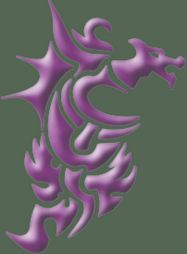.. yang side here.
We took a side trip to a town called Montecristi about 50 or so miles from here. Montecristi is a small tourist town at the bottom of a hill (curiously named Montecristi before there was a town). And what attracts the tourists? It's a center for Panama hat manufacture and sales.
Real, handmade, Panama hats.
Panama hats first gained international fame when they became the unofficial/official hat of the workers and especially the management building the Panama Canal. But even more curiously, the designation Panama hat has nothing to do with the canal or the country. And they have always been made in Ecuador. Even before the US created the country Panama by slicing off a section of Columbia (there's a story for another blog), even before the money was assembled to build the canal (which was well before Columbia got tough on canal building negotiations after France's failure which necessitated a new and pro-US country), Ecuador was making Panama hats. How? Panama hats are made from fibers of the Panama palm. (Clever, huh?) Slit the leaves and stems down to individual, very tough, very flexible, very thin fibers, and you have something to weave with.
True Panama hats of fine to extra-fine designation, come with a box about a foot long and an inch square on the inside. With a true Panama hat, you can roll it into a cylinder (crown at one end brim at the other), store it in the box, and then, when you want to wear it, take it out and it will resume its normal shape. The original ready-to-wear, wrinkle-free. Plus a fine to extra-fine hat will hold water ... the outside won't get wet. Or conversely, your head stays dry in the rain. Perfect for working on canals.
Some cruisers had already visited Montecristi and mentioned a specific shop. Turns out that every shop has hand-made Panama hats for sale. Hope bought a less-than-fine hat with a wide brim and a rounded crown. Quite stylish ... not all Panama hats are made for men's fashion. Size is adjustable by simply slipping on an adjustable hat band and the woven material will deform to a head size (somewhat) without deforming the shape (hardly noticeable usually). Worked for Hope's hat. They originally wanted $12 but with the negotiational skills of our taxi driver, Giovanni, we got it for $8. He was working on $5, but they weren't going for it.
I didn't see anything I really liked so the store owners took us to another store where they had some extra-fine hats. The original asking price was $85, we'd gotten them down to $35, and they probably would have taken $30 if we whipped out the cash. But again, nothing was 'just right' so I passed. On the way out of town, there were many other places with more options so I may go back, or wait until we're in south-central Ecuador around a town called Cuenca which is another center of hat manufacture.
These probably weren't true extra fine hats ... the quality levels being inflated and the pricing not matching. We'd heard of a cable TV special on the making of Panama hats. Apparently there are only two guys left in this region who still weave true, extra-fine hats. It takes them 6 months per hat and they get about $50. All their products end up in New York boutiques where they retail around $10,000 give or take a couple of thou. Unfortunately, these guys are getting old and are going blind. They lean on a post to work over their weaving mold from above and their chests are deformed with the indentation of the leaning post. It's been the only work they've done since childhood. They weave to a round mold and then the round crown is pounded with a wooden hammer on molds of different shapes.
In other, late-breaking news, our main engine seized up last week. The good news is that it is some problem either with the valves or with the fuel system. No clunking, banging, or grinding noises. Work I can do. We won't need a major or complete overhaul. Spanish classes are progressing and we're even having discussions with locals. People are very friendly and consider Americans generally rude because we don't say 'Ola! Como usta?' very much. We tend to focus on the task at hand and don't realize that market day is supposed to be just that: a whole day for about an hour's worth of shopping. Greeting friends, catching up, and making new friends are part of every task.
Enough for now. We're here through sometime in October, then to the Galapagos, then back up to Panama in November sometime.
----------
radio email processed by SailMail
for information see: http://www.sailmail.com

No comments:
Post a Comment